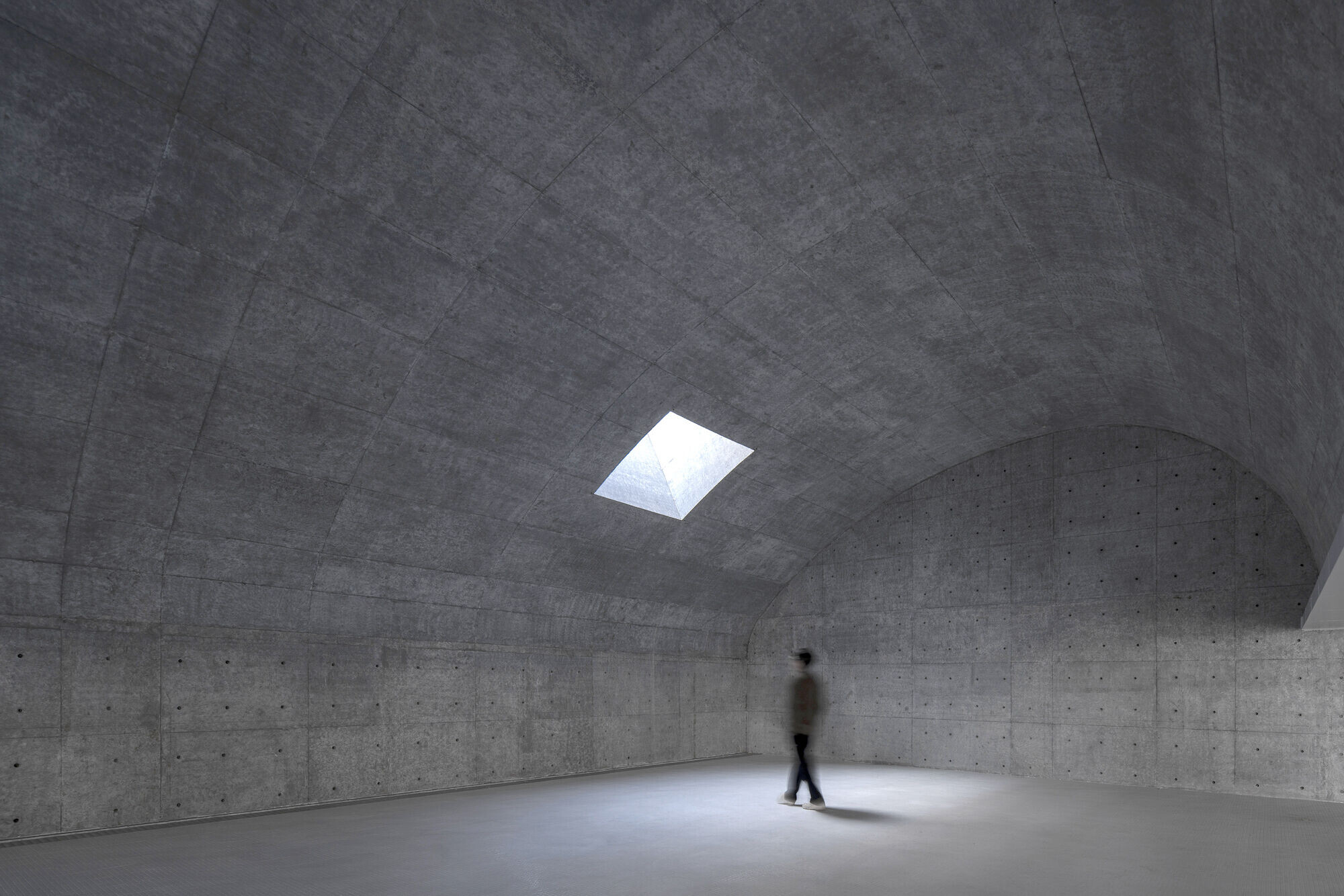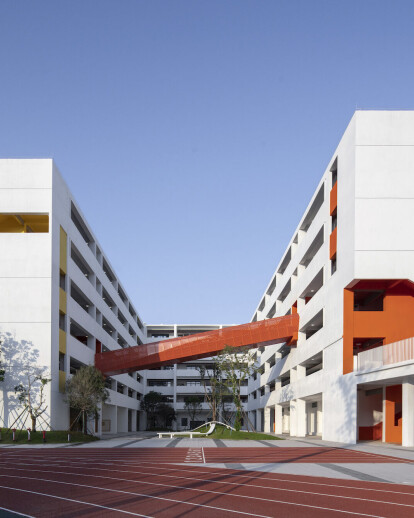The representation of order and poetry | Nanhai Guicheng Jingui High School
During the process of urban development in 2020, Foshan city made quite impressive achievements, especially the population increase ranks the fifth all over the country. In order to attract more people to stay, the city has improved and increased the infrastructure construction and many of which can be compared to the developed cities. As one of the most central urban areas in Foshan, Guicheng has also launched a series of urban development plans. To offer a better education environment to the immigrants, the plan shows a focus on the construction of new schools and the improvement of educational facilities. One of the key new project is the Nanhai Guicheng Jingui High School (tentative name).


Order and Diversity
The site is adjacent to two main roads that lead to the Guicheng Yingyue Lake, which shows a close relationship with the city center. According to the requirements, the campus needs to serve a total of 3,000 teachers and students, including teaching spaces, living rooms, administration buildings, auditoriums, gymnasiums, etc.. With a total construction area of about 90,000 square meters, the building density tends to be quite high.
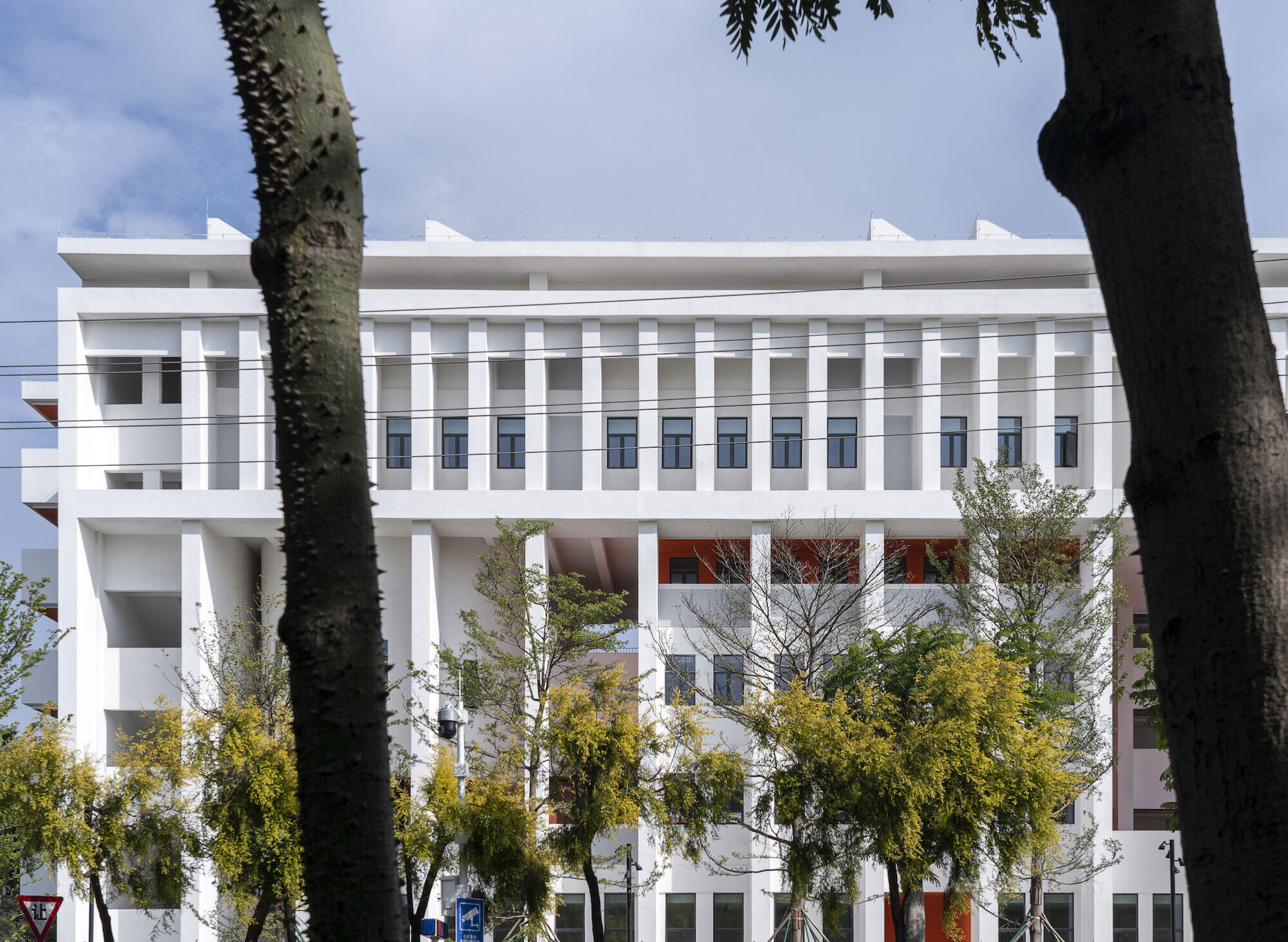

In terms of the urban design, the architects aim to pursue a sense of integrity, improve the accuracy and efficiency on land use, so as to ensure the order, scale and the orientation of spaces. Based on the design thinking, a temple-like complex is designed with continuous colonnades and a uniform openness. It strengthens the existence of the facade, recalls a sense of order of classical architecture, further gives people a serious impression. But the following natural landscapes and the public spaces behind the colonnades, reveal a contrasting architectural language with spatial diversity and rich facade expressions, which make people show a great curiosity to explore.

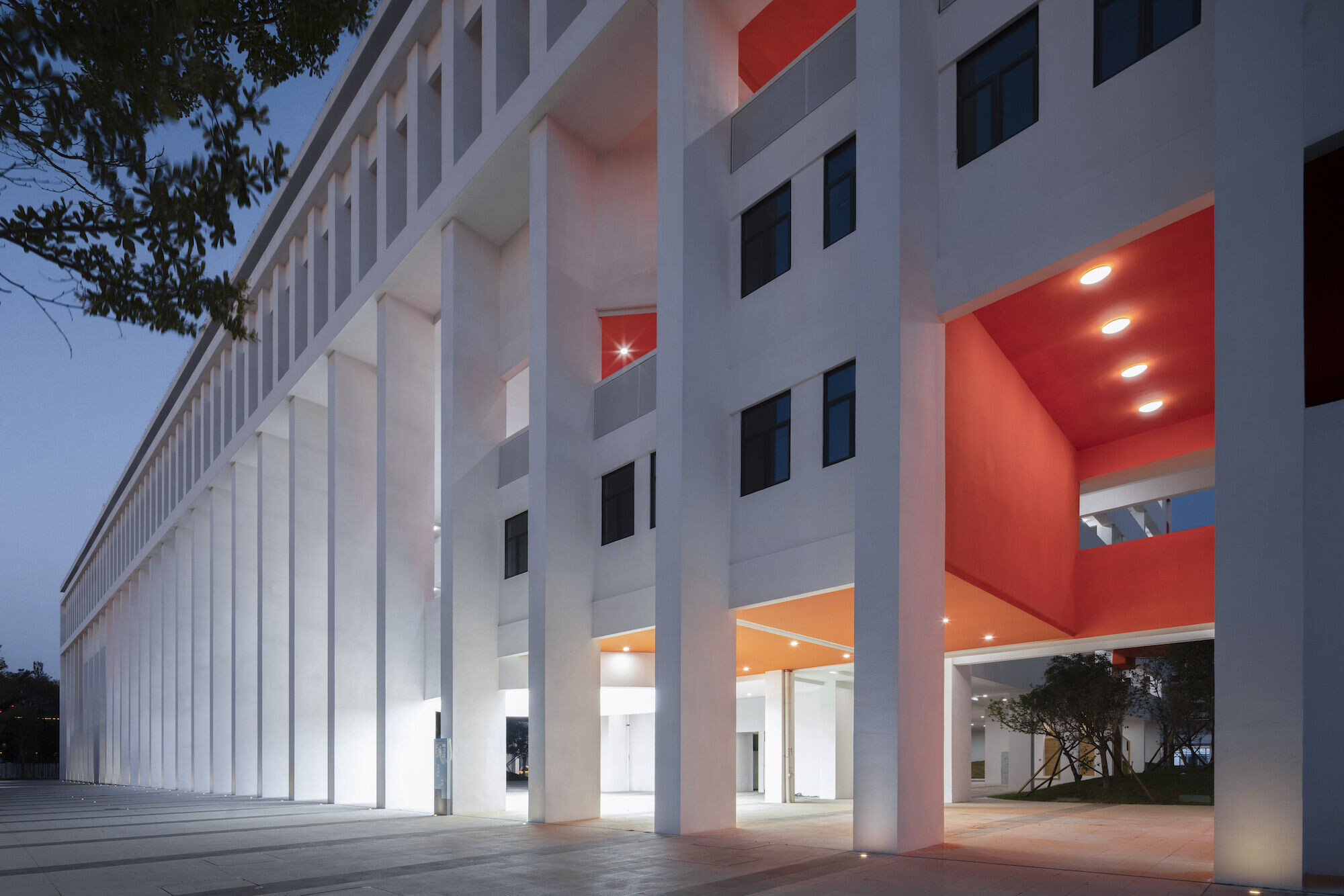
Playfulness and Inspiration
For the main users - middle school students, the campus is an important space. It may affect their recognition of aesthetics in a certain degree. Therefore, the architects aim to create an environment with the following characteristics:
Openness - Although the complex has a rigid layout, the public spaces are flowing through in between. Through the void underneath the first floor, a continuous landscape is brought into the campus. Students are free to run, climb, and walk to different platforms to explore their interests.
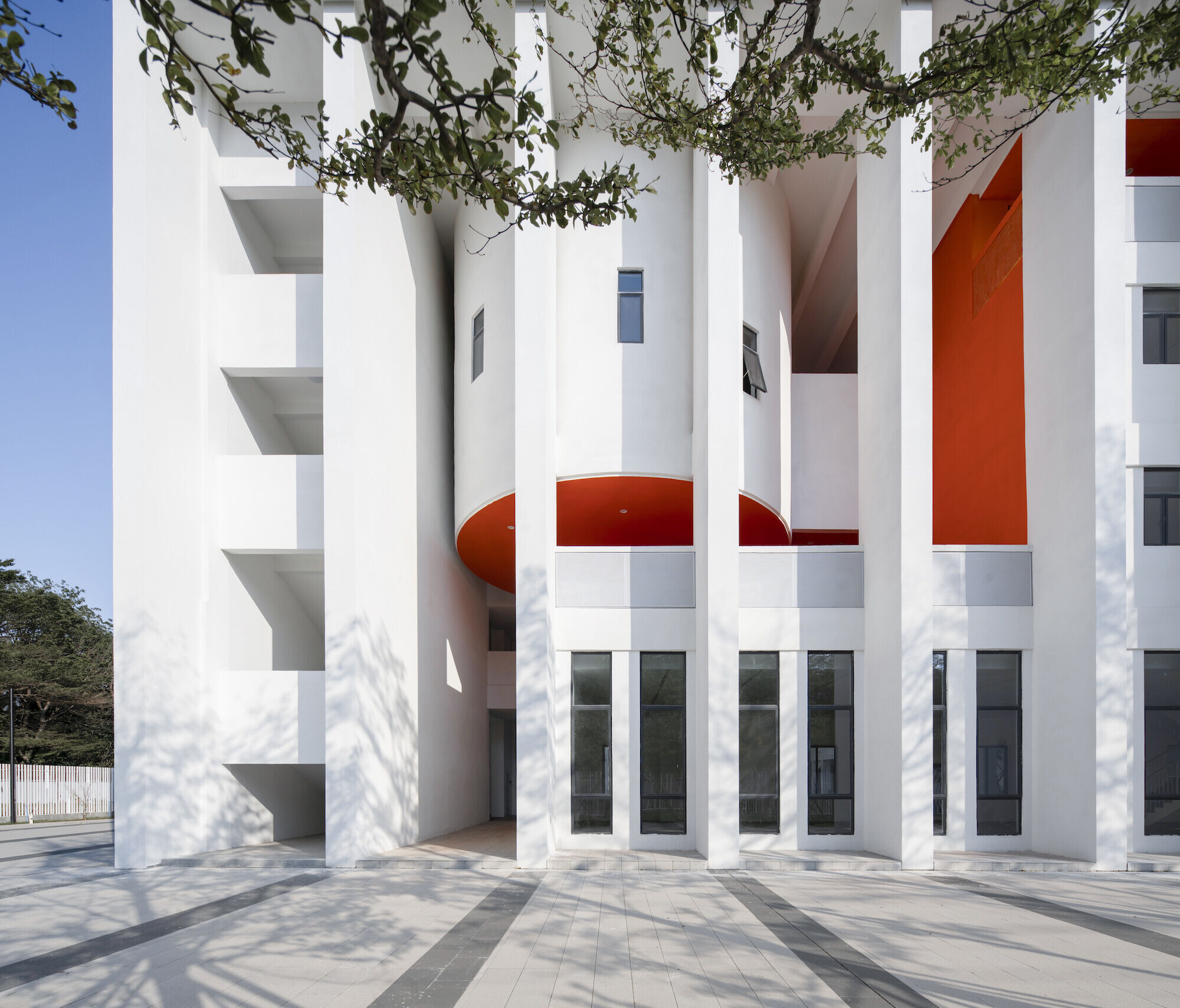
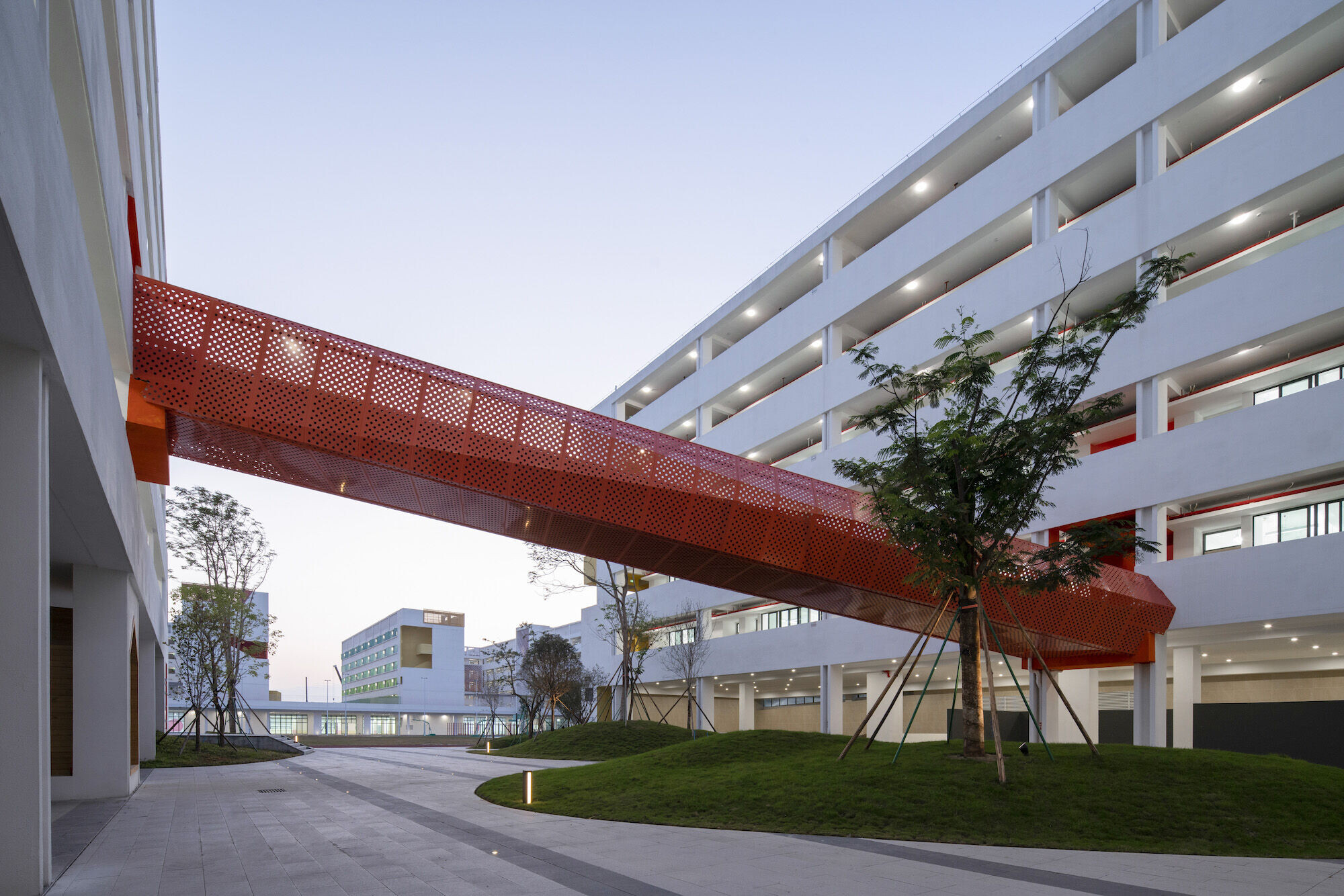
Mystery - Just like imaginative teenagers, spatial design should also be unexpected. Contrasting scales of halls and small platforms, contrasting forms of open courtyards and flat voids, contrasting colorful paints of pure white and warm orange... all of these elements are showing a dramatic effect. Here, the spirit of exploration is encouraged.
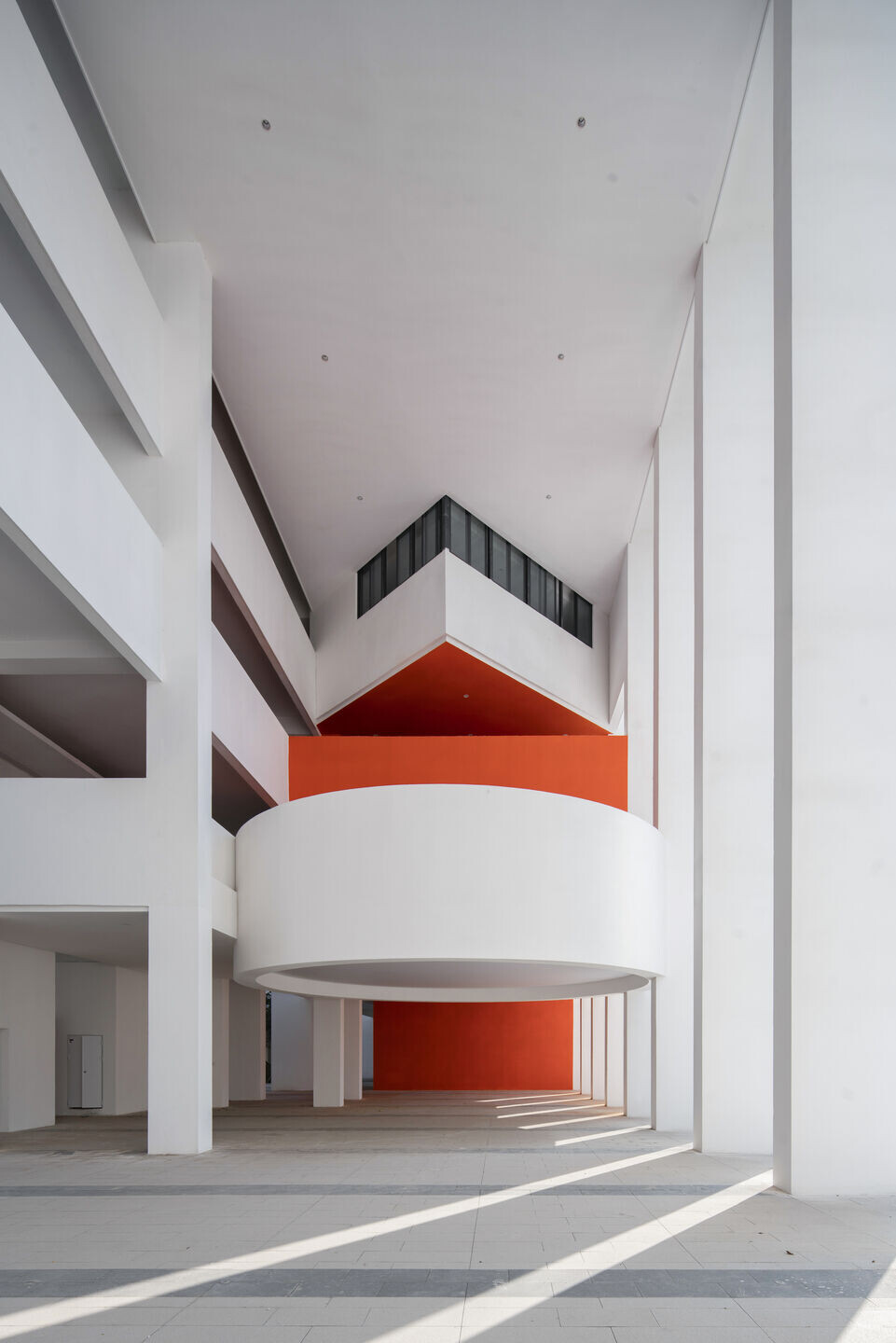

Logic - In spite of the expression of freedom and romance, the logic and sequence of space is aimed to be perceived as well. Open public spaces emphasize the axis and direction; The seemingly random facade and platforms actually creates a potentiality of visual contacts; The sky bridge across the building, offers the shortest way in between the spaces in terms of the circulation... Although the architects love to bring diversity in to the campus, the spatial design and experience are still aiming to be restrained, focused, and scientific.

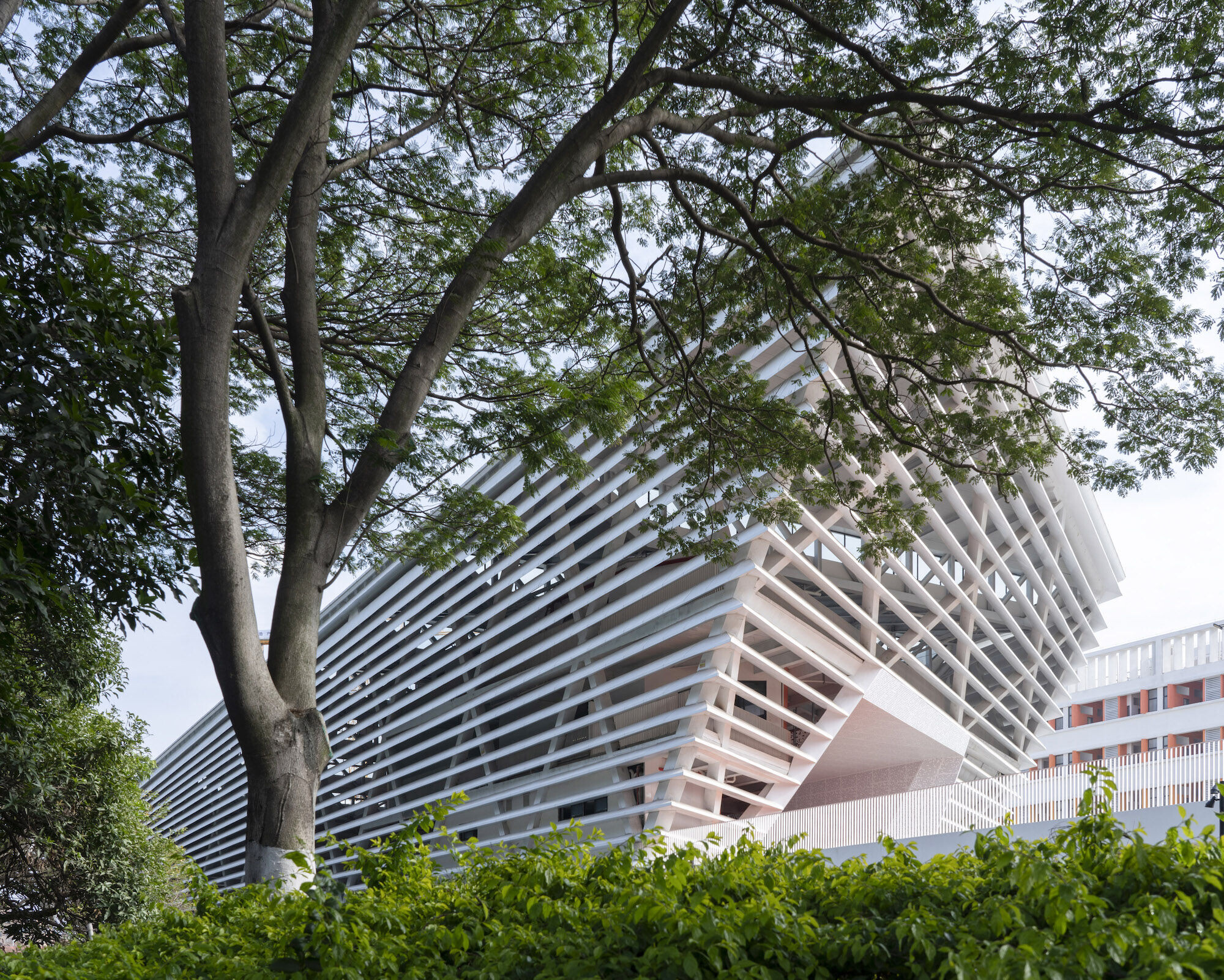
Regional Energy-saving Strategies
From building construction to long-term maintenance, energy-saving, economical administration and thermal comfort is consistent throughout the design. Located in Foshan, Guangdong, the summer is especially hot and humid. To improve the natural cooling effects, the ground floor is elevated to allow the cross ventilation. Combined with a circulation system, students can walk through the campus even under a bad weather condition.
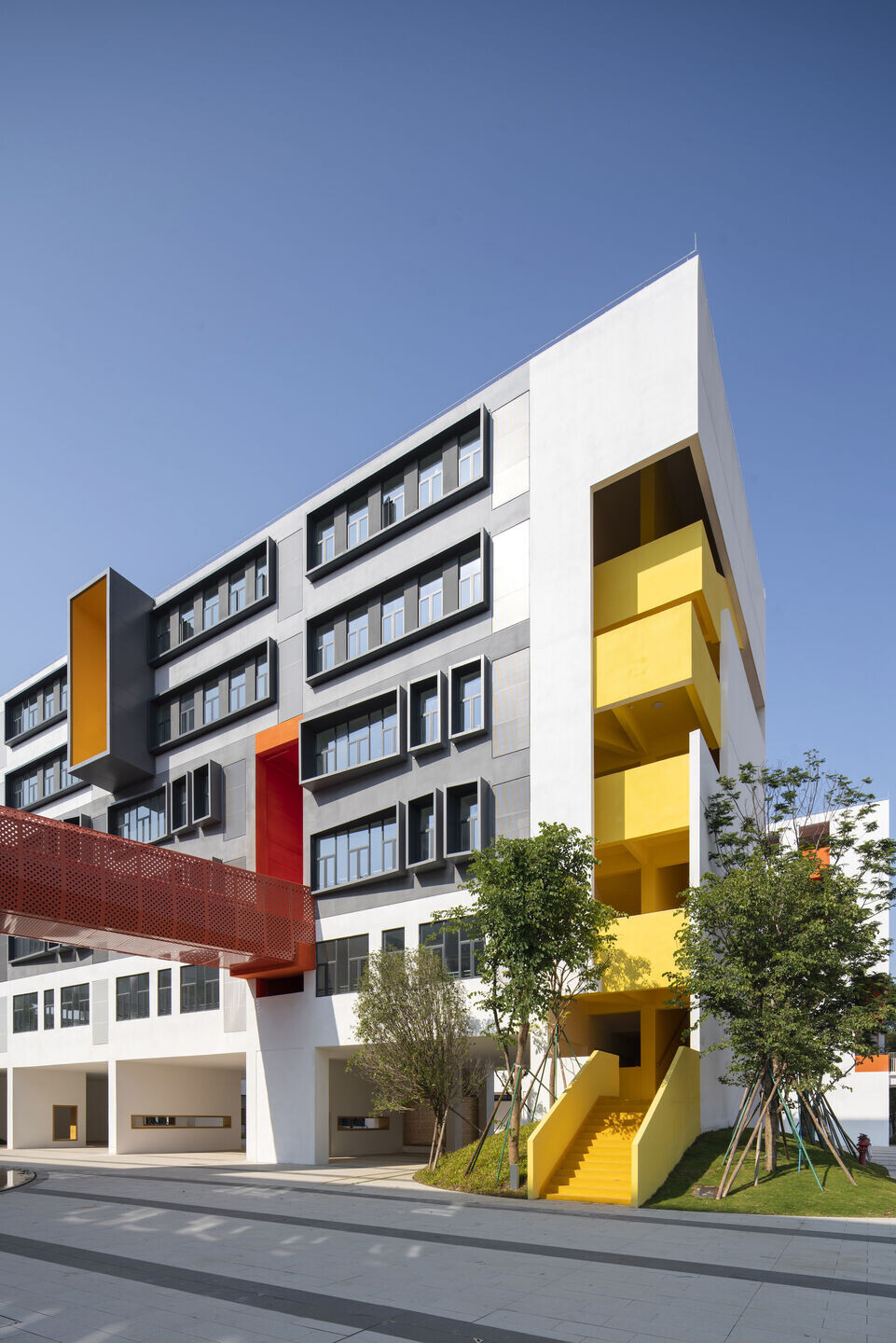

For the large scale building like stadium, the architects applied a series of energy-saving strategies to decrease the costs on daily maintenance. One of the key solutions is the exhaust fans near to the ceiling-high windows, which improves the natural ventilation by accelerating the air speed. Another is the guiding boards for changing the route of airflow from exterior to interior, which also have a positive effects on the cross ventilation and thermal comfort. Moreover, by changing the angles, the guiding boards can keep the humid air away from the interior during the rainy days in summertime and bring the soft daylight into the classroom.
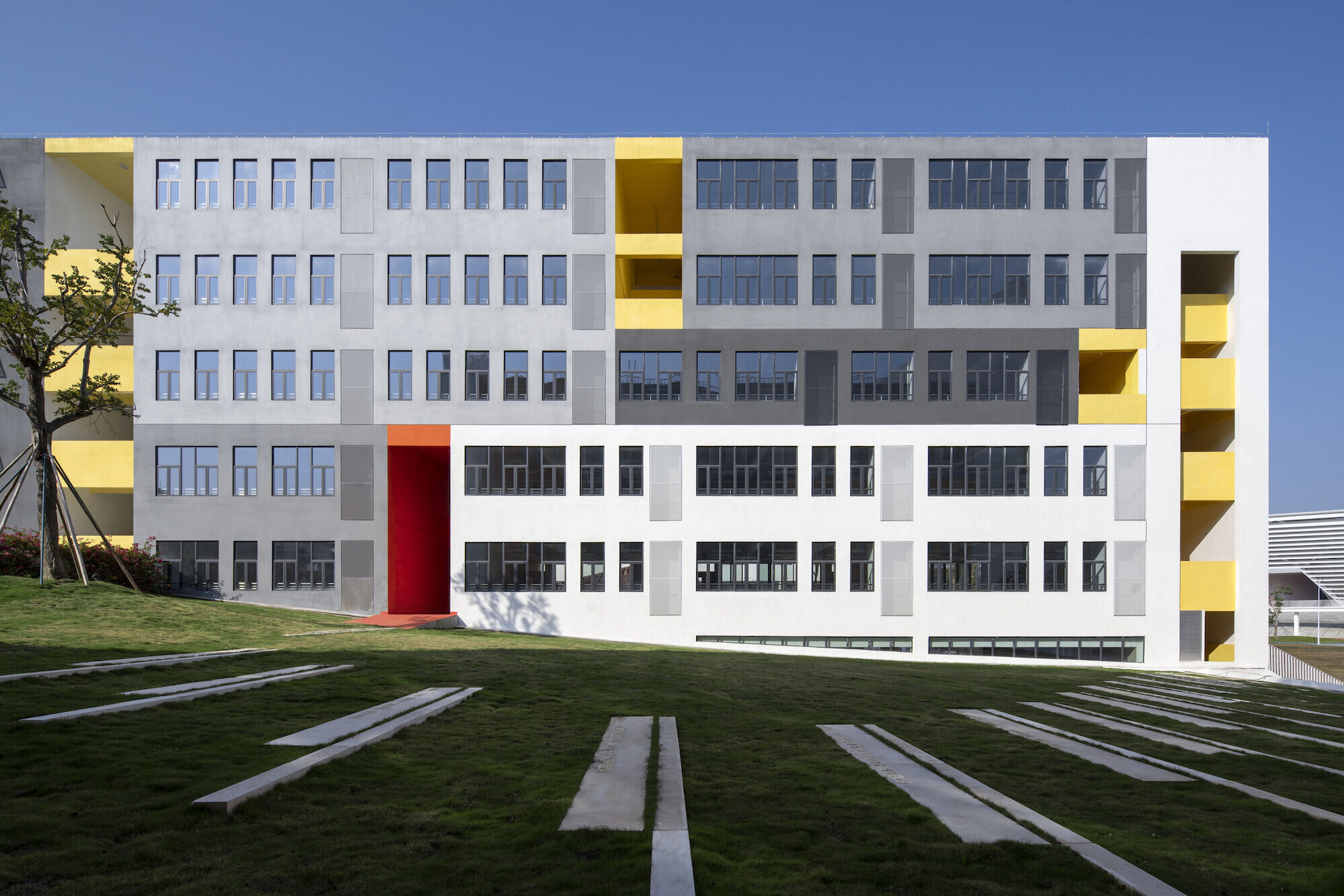
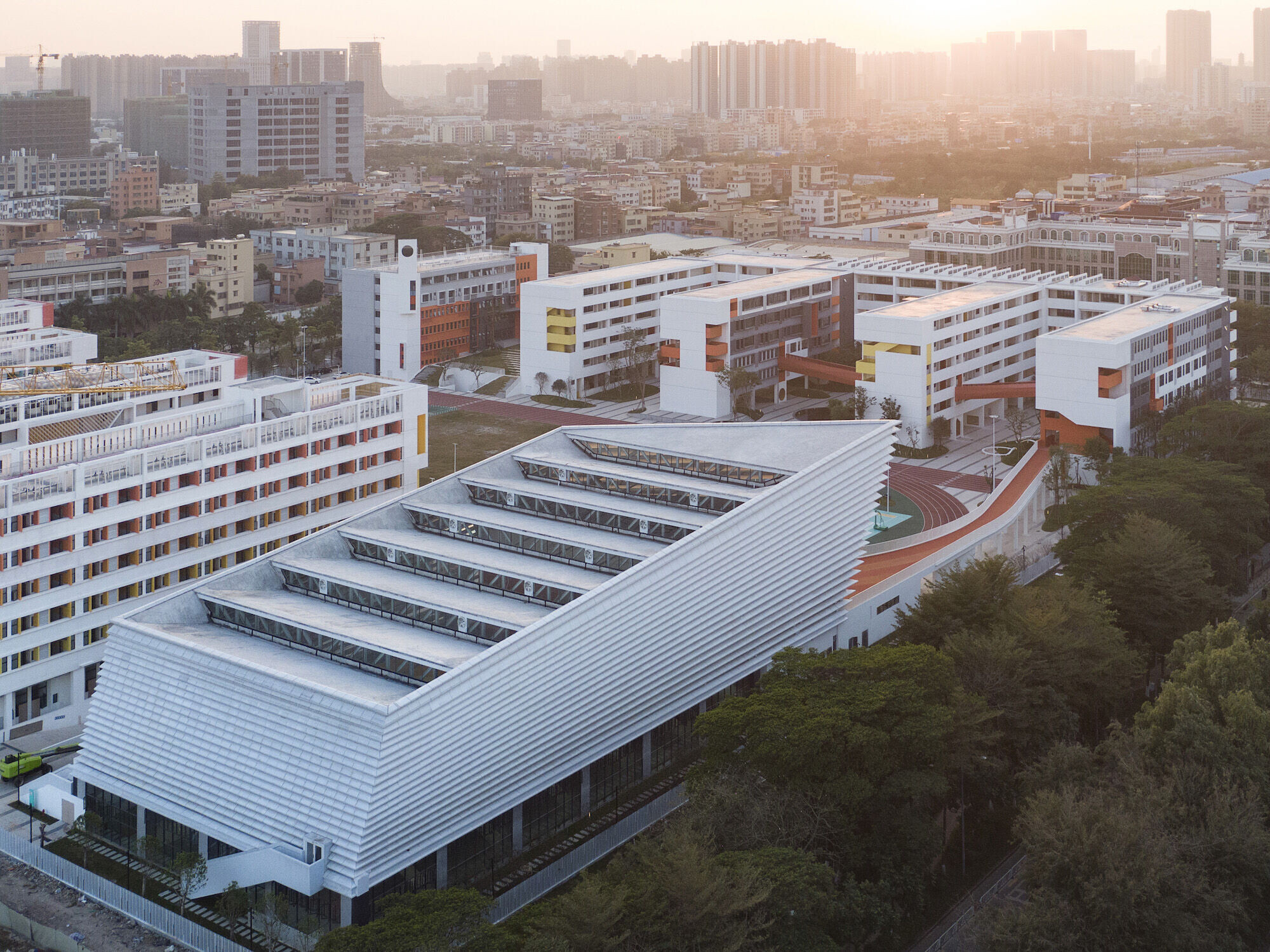
When dealing with the swimming center and cafeteria that with much depth, the architects then applies the skylights to bring more natural lights into the interior, so as to reduce the usage of artificial lighting.
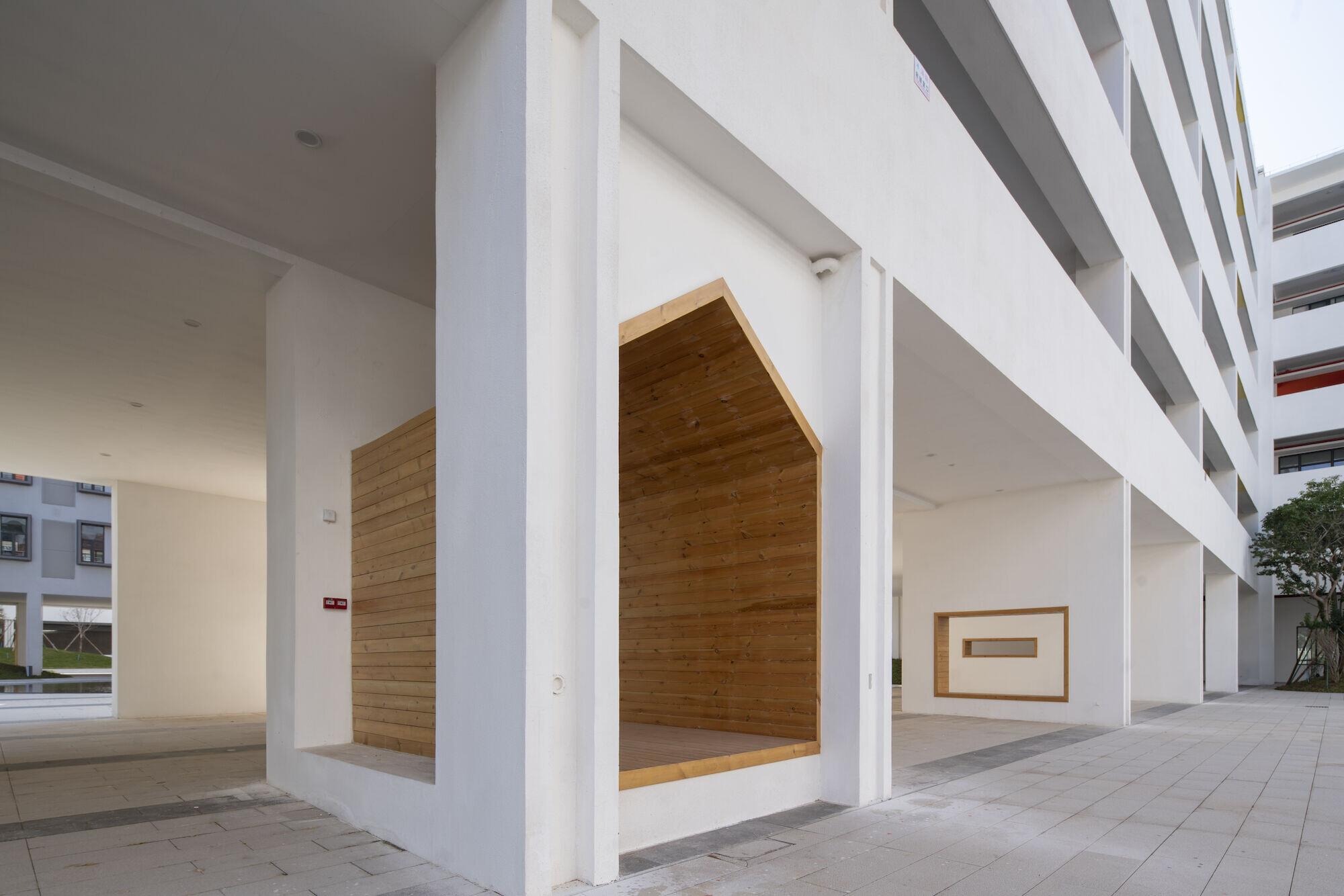

In the landscape design, the architects adopted a ‘decentralized’ concept, managing to bring more green spaces to the campus. Combined with water systems, roof greening, etc., the boundary of the campus tends to be softened and the local microclimate is likely to be improved to some degrees.
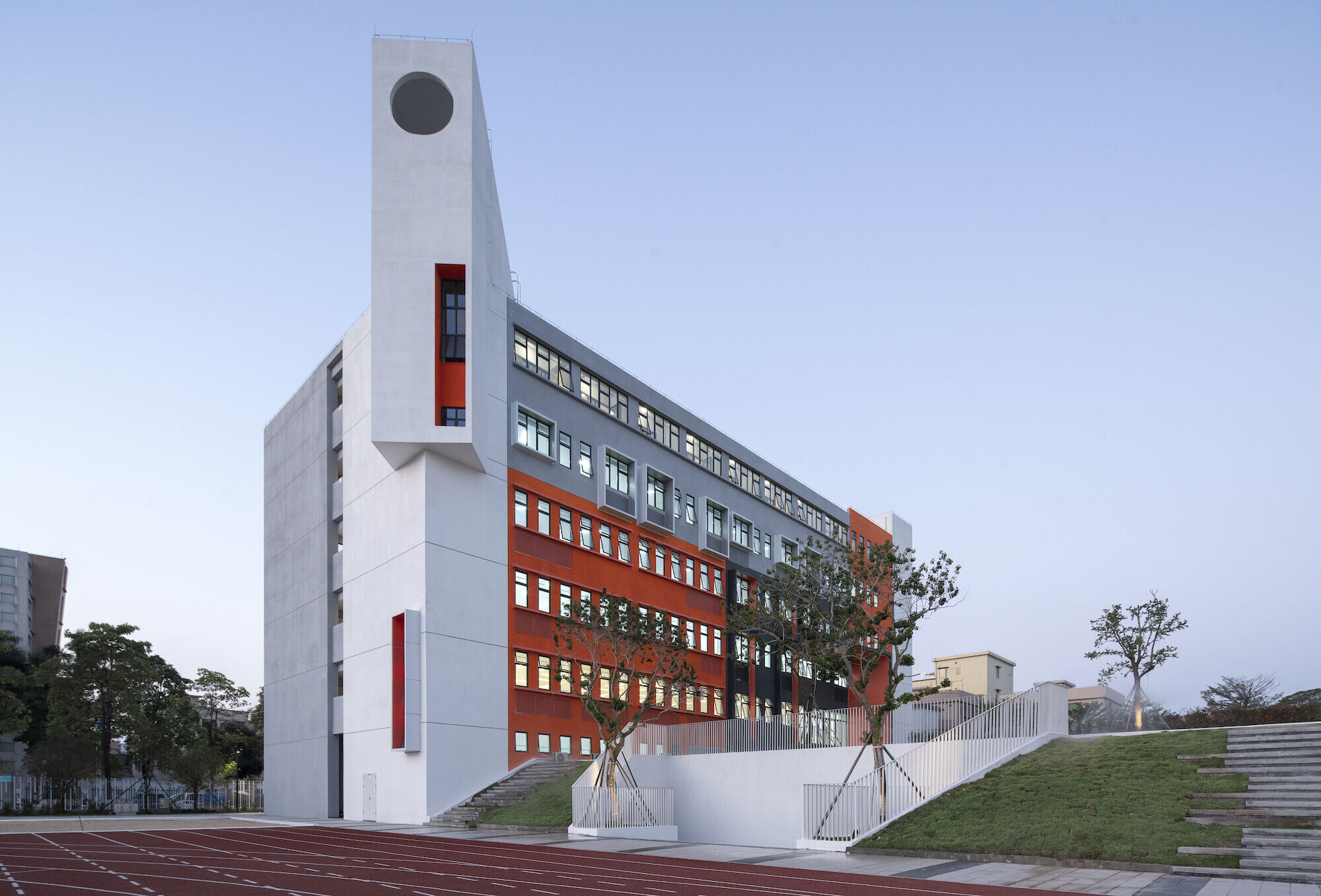
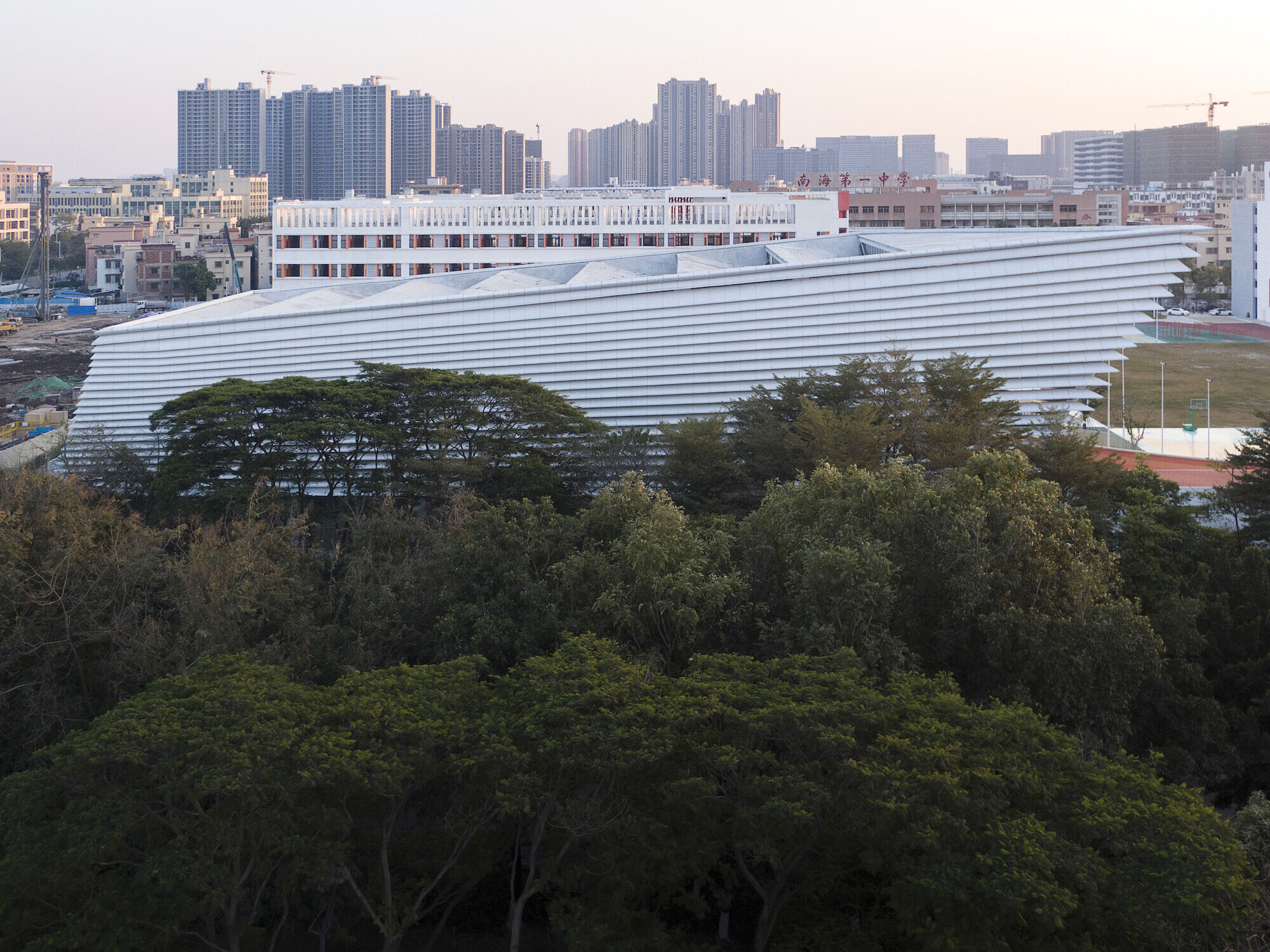
Aesthetics of Pure Structure
In the design process, the architects selected to keep a pure structure form for the large-span spaces. Without any decorations, the structure is completely exposed to the surroundings, presenting a structural aesthetics and a sense of strength. From the concrete arches in the swimming center, to the repetitive X-shaped columns in the gymnasium, all illustrating a simple rhythmic beauty.

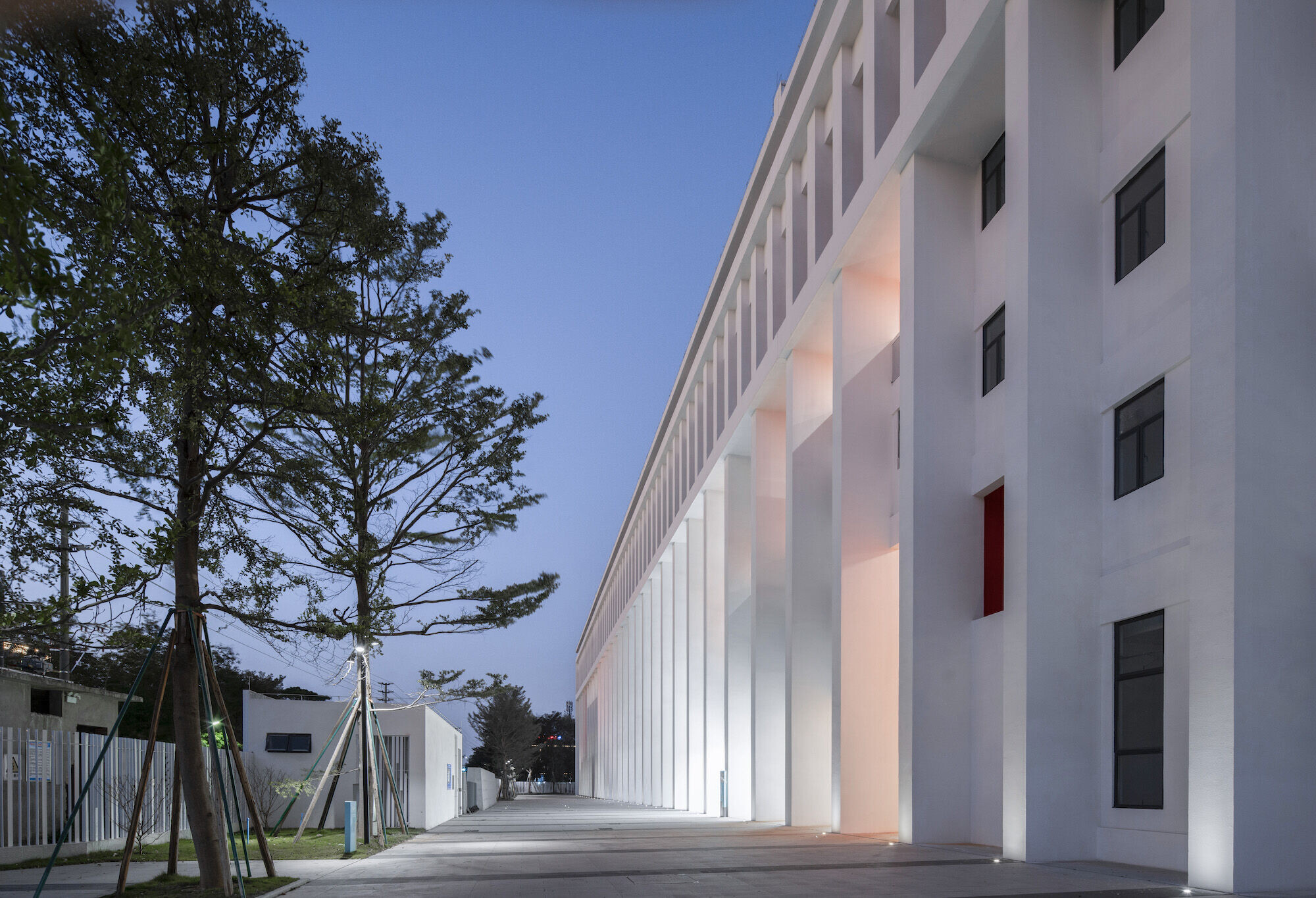
Team:
Clients:Guicheng Street, Nanhai District, Foshan City; Guicheng Investment Development Company, Nanhai District, Foshan City
Architects: Atelier cnS
Lead Architects: Zhiyuan Zhu, Gang Song, Guanqiu Zhong
Project Manager:Hairui Lin
Architectural Design: Atelier cnS Group B: Wenxuan Huang, Wenjing Xiao,Peijia Li, Xiaoyin Chen, Zhanchong Deng, Qiting Lin
Interior & Landscape Design Chief Designers: Zian Luo
Interior Design: Jiaqi Li, Zhencheng Huang, Chunjie Zhou
Landscape Design: Die Ye, Danyi Huang
Signage Design: Shifeng Mo, Qiuyi Jian
Construction Drawing: Foshan Lingnan Architectural Design Consulting Co., Ltd
Photographer: Siming Wu
